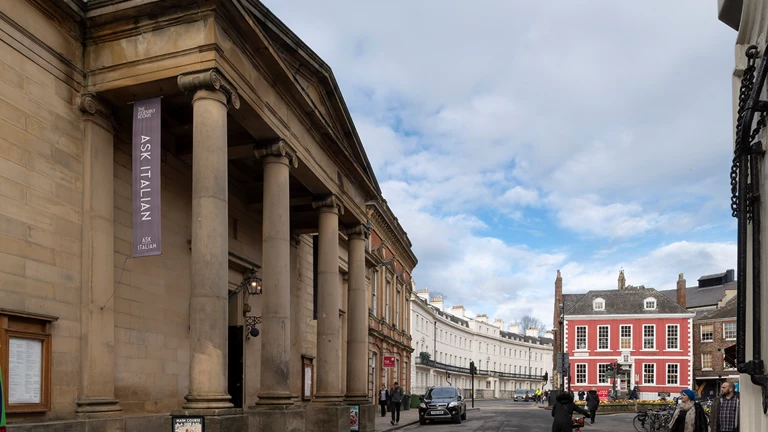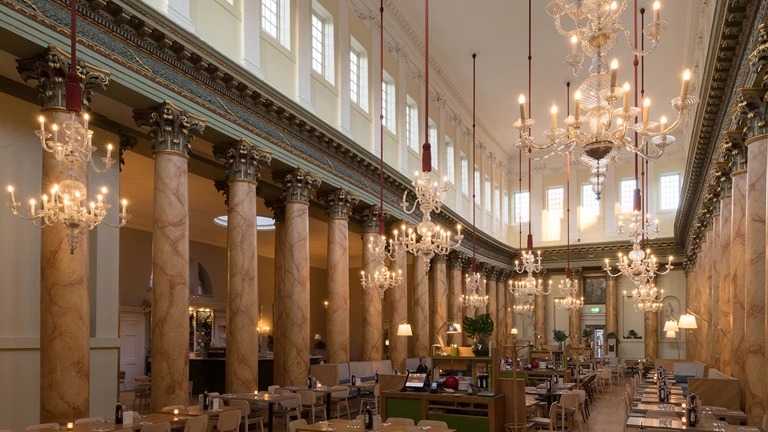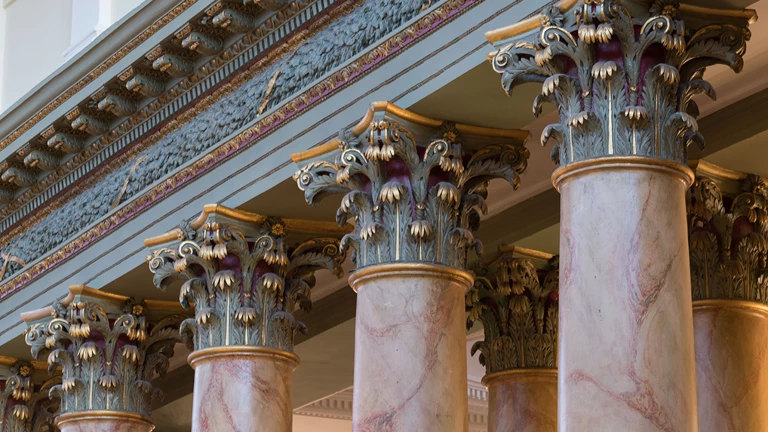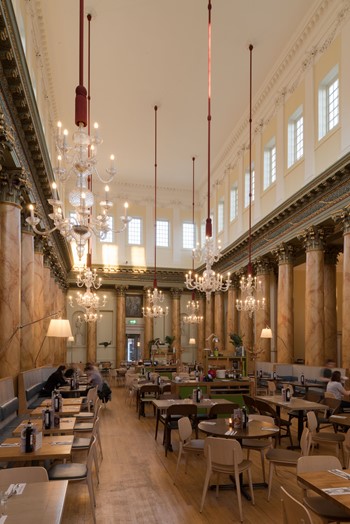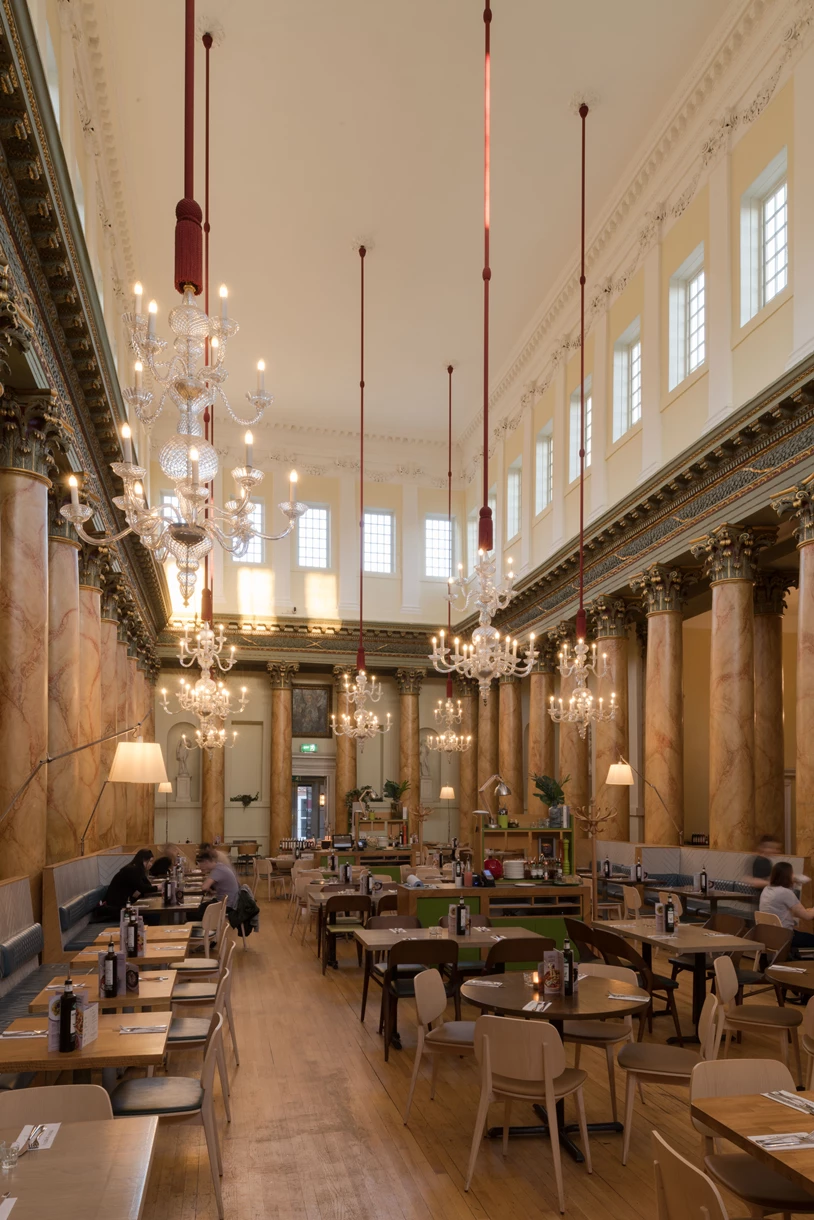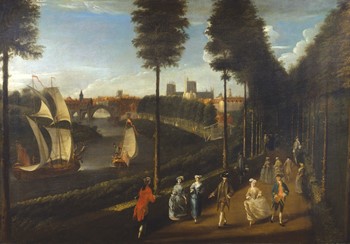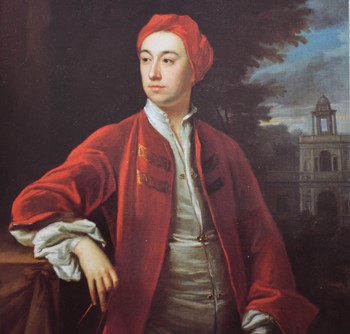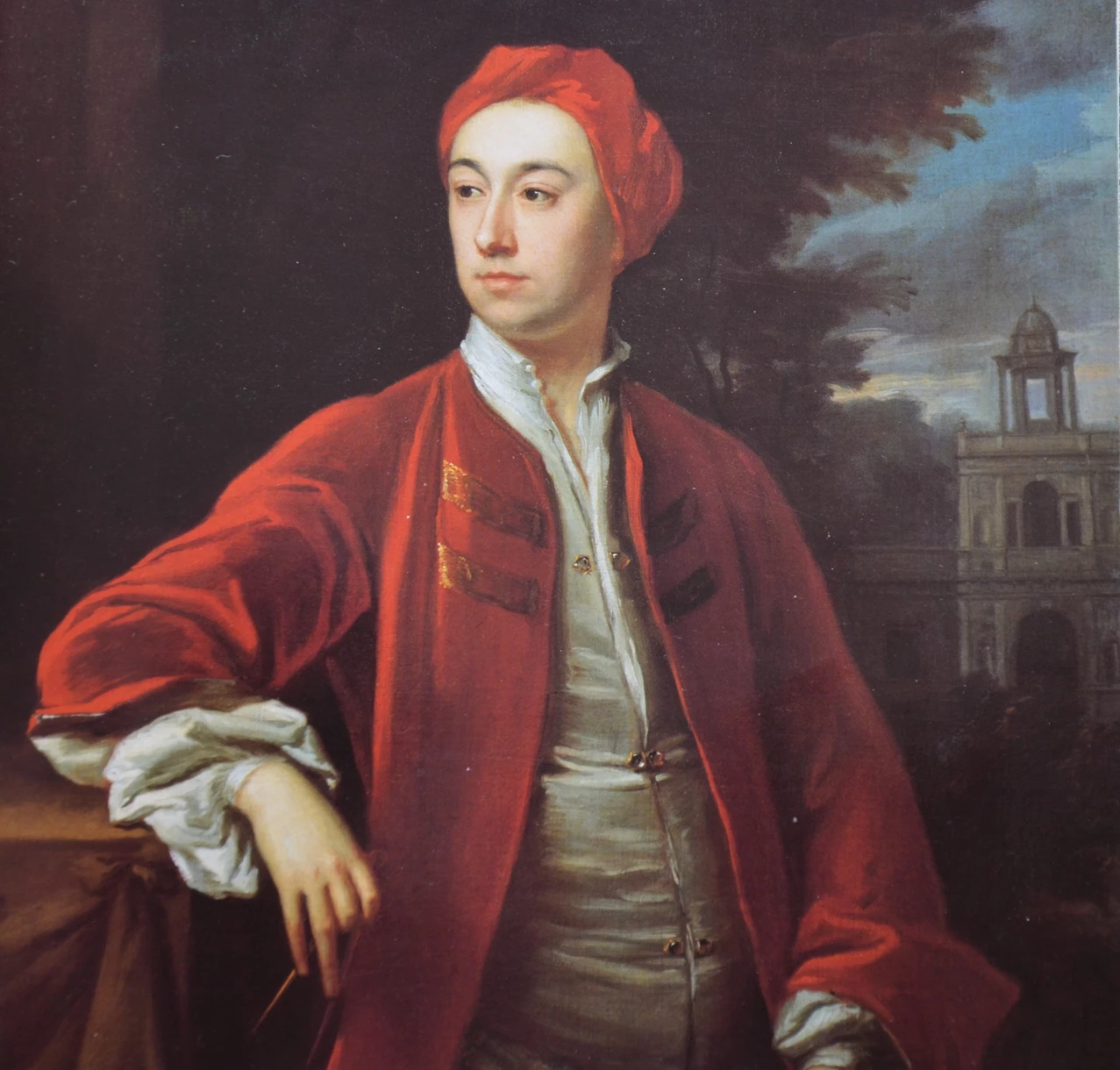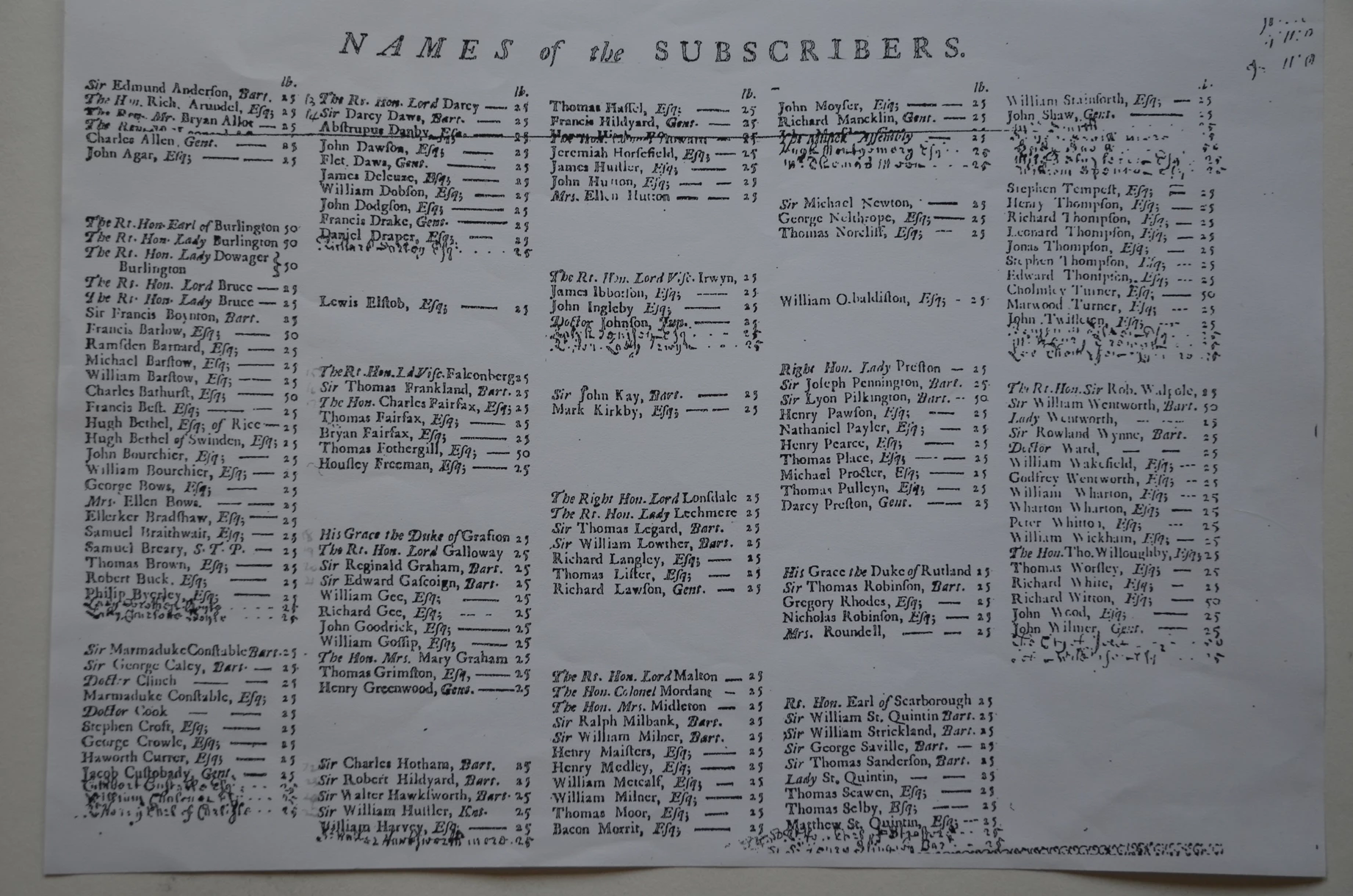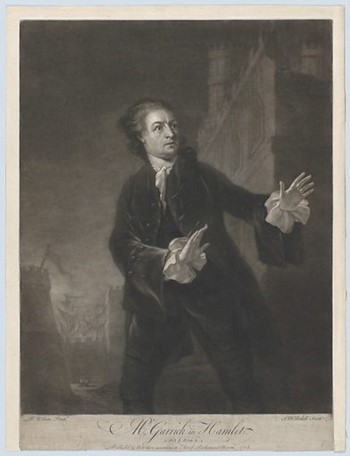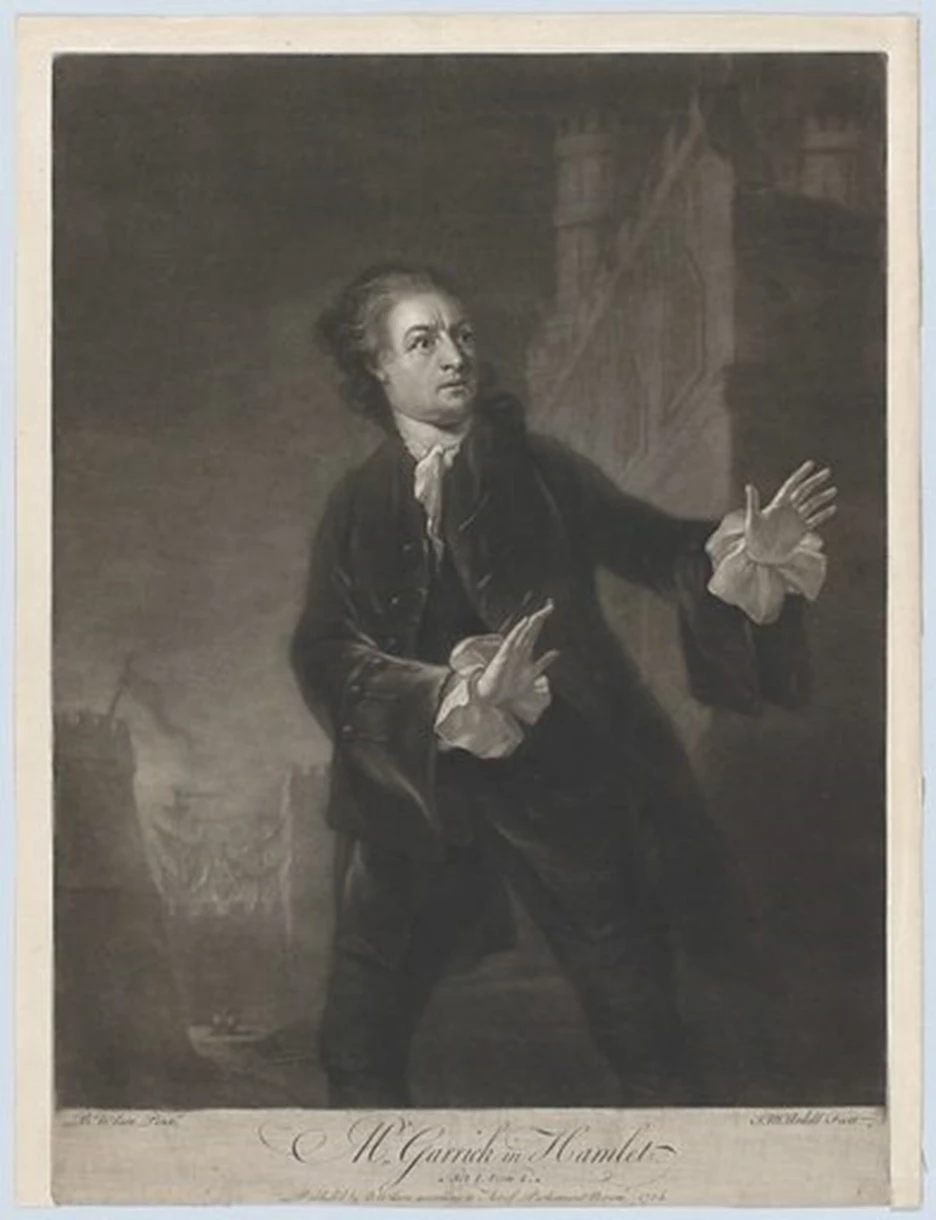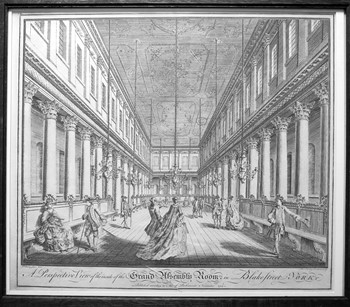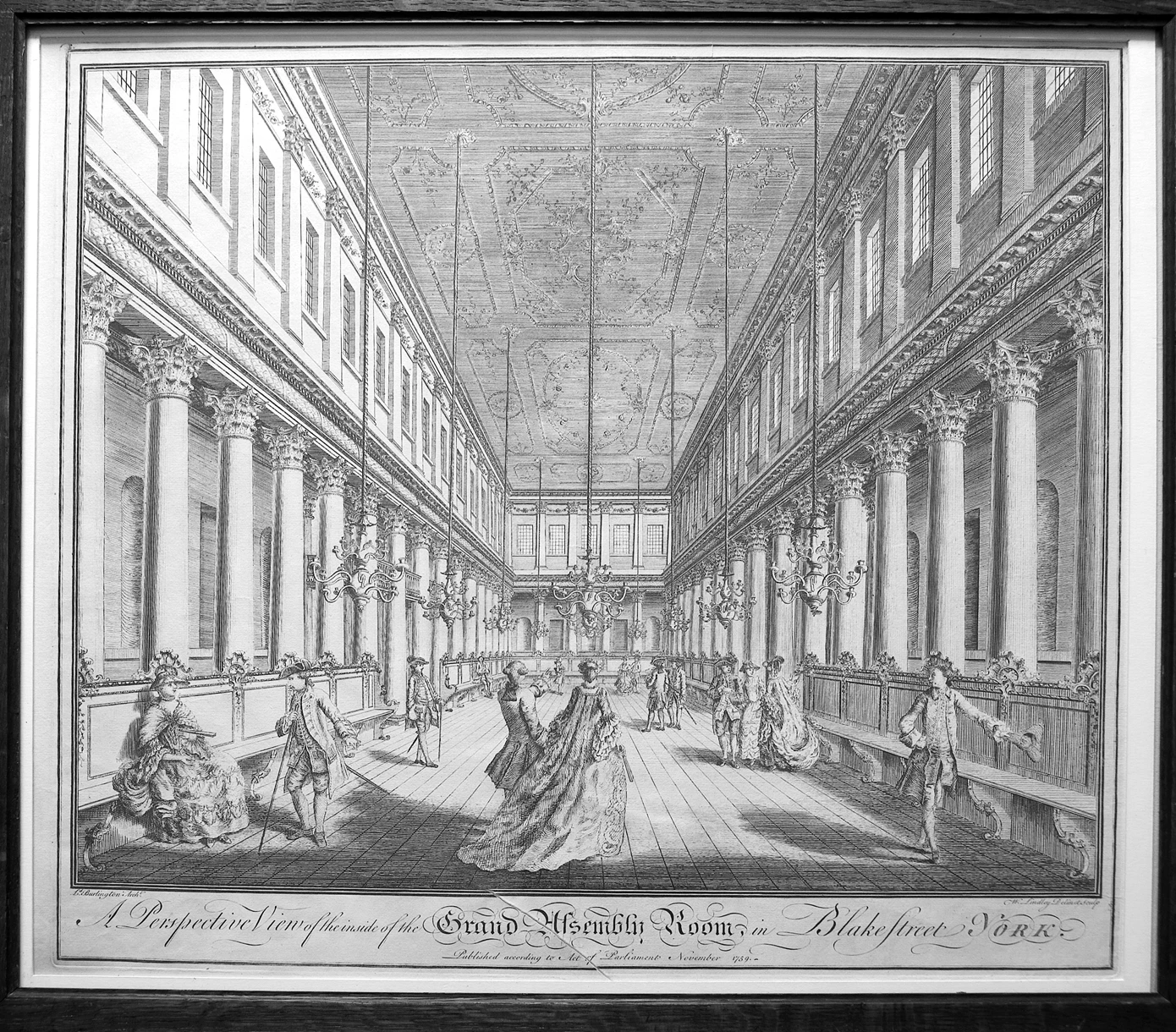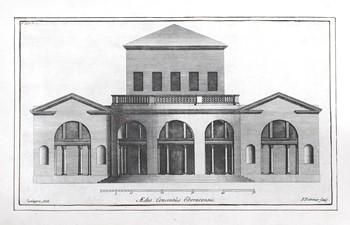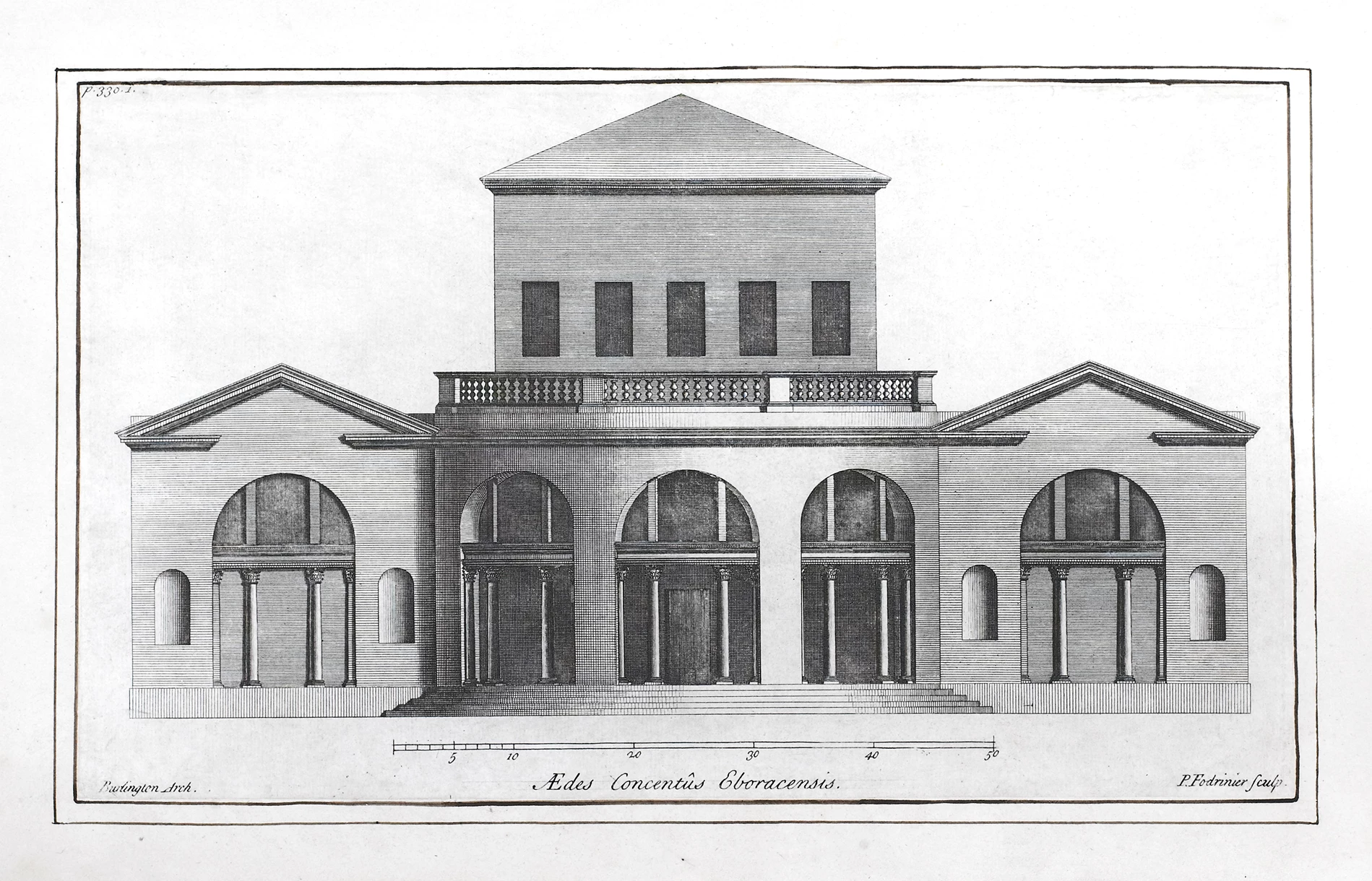The Assembly Rooms
The first neo-classical building built outside Italy
“The precious pearl is cast amongst ye swine…”
David Garrick
If one building illustrates the aspirations and ambition of York in the early part of the 18th century, it would be the extraordinary Assembly Rooms on Blake Street.
With the growing popularity of horse racing on the Knavesmire, the City Corporation realised that attracting affluent visitors was key to boosting their finances. By 1730 there was a fine new Mansion House for the Lord Mayor; a grandstand for the Knavesmire track and New Walk: an elegant promenade for ‘polite society’ beside the river Ouse. The City Fathers then turned their attention to providing entertainment, not just during the well-attended race meetings, but throughout the year.
Sir William Wentworth, on behalf of the Corporation, visited Richard Boyle, 3rd Earl of Burlington, in London to explain the plan, “and give your lordship an account of the whole design, which we hope will not fail, under your Lordship’s protection.”
Lord Burlington proved to be a shrewd choice for architect and project champion. A well-known figure in the cultural life of early Georgian England, he had a country house near York at Londesborough and saw York Assembly Rooms as a great opportunity, not just for the city, but also to promote his ideas of Palladian architecture.
The requirements were simple: a large room for dancing, another for cards and play, a room to make tea and some basement rooms with chimneys for the footmen. The Corporation thought a budget of £3,000 would be sufficient, but Burlington felt this inadequate for his scheme and raised a further £2,500 from wealthy friends.
The result was the first neo-classical building outside Italy, based on a design for an Egyptian Hall, illustrated in Palladio’s famous books, I Quattro Libri, of 1570.
Fully completed in 1735, the main ballroom features 44 magnificent columns of stone and stucco (moulded plaster decorations), supporting an upper storey decorated with pilasters and 44 unusual iron windows, which could be opened from the outside. This feature, however, had unfortunate consequences when, on one occasion, disgruntled citizens (who were given access to the roof to watch the dancing) opened the windows and pelted an unpopular Lord Mayor with rotten apples and tomatoes.
Much of the building work was carried out by York-based craftsmen, although in the Director’s Minute Book, a quote from an Italian stuccoist, Mr Vercelli, suggests he was responsible for the great capitals (decorative top sections) of the 44 columns.
Lord Burlington himself was one of the Directors and became involved in the management of the rooms for around 20 years. Sadly, his death in 1753 marked the gradual decline in the Room’s popularity and use. So much so, that in 1778, David Garrick, one of England’s foremost actors and playwrights of the day, was so furious about their neglect he wrote angrily to the City Corporation...
“In vain did genius plan this great design. The precious pearl is cast amongst ye swine. Oh for a magic power to waft ye pile. From this, ye vilest spot in Britain’s Isle. To that famed land where taste with science reigns.”
David Garrick
The following years saw a period of mixed fortunes for The Assembly Rooms; throughout the early part of the 20th century playing host to highly popular tea dances.
Acquired by the Trust in November 2002 to ensure this magnificent space, built to inspire awe and encourage enjoyment, remains viable and accessible, The Assembly Rooms are currently a restaurant. They are open for public viewing and are also used for City of York Council functions throughout the year.
The New Walk by Nathan Drake, c.1755, courtesy of York Art Gallery and Peter Brown.
Lord Burlington by Jonathan Richardson c.1720, courtesy of the National Portrait Gallery, London and Peter Brown.
Fund raising list of subscribers.
David Garrick in Hamlet, November 1754 by Benjamin Wilson and engraver James McArdell, courtesy of The Metropolitan Museum of Art.
Discover more about York's Assembly Rooms
Ask Restaurant
Blake Street
York
YO1 8QG
Tel: 01904 637254
Historic England Grade l listed building
Why is York's Assembly Rooms significant?
The Assembly Rooms are held to be the first neoclassical building ever constructed, and have been noted as being “of seminal importance in the history of English architecture” and “one of the most influential pieces of architecture of the early 18th century”. Designed by Lord Burlington in 1730, the Great Assembly Room was modelled on the design of an Egyptian Hall by Roman architect, Vitruvius. The Assembly Rooms were designed as an elite entertainment space for holding dances and social gatherings. Its construction reflected the growing importance of York as a centre for Georgian polite society in the North, and form part of a wider collection of major civic developments during the 18th century, confirming York’s status as one of the country’s key social and cultural hubs. The Assembly Rooms reflect the wealthy of 18th-century York and surrounds at play.

